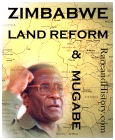Black Canada Lifts Its Voice and Seeks the World Stage
Posted: Monday, August 27, 2001(Barbara Crossette) HALIFAX, Nova Scotia - On the edge of Atlantic Canada, far from the American South and the slave-trading ports of Africa, a long-established community of black Canadians is beginning to join calls for reparations for slavery and for greater recognition of their history.
Like civil rights campaigners in the United States, black Canadians want their voices to be heard in Durban, South Africa, at the end of August at the United Nations international conference on racism and discrimination. That is especially true in this port city, where a once strong black community is in the midst of a cultural revival.
The black residents of greater Halifax - in the old city itself, across the harbor in Dartmouth and in the semirural township of Preston - form one of the oldest and largest black populations in Canada, their leaders say. Black immigrants arrived along with the French, British and Scottish settlers of the British colonial era.
"Well, you won't hear much about us on the regular tours," said Carolyn Thomas, as she guided a visitor around the Citadel, the fort that looms over the town of Halifax. Black residents say it may have been built in large part with forced labor by the Jamaican Maroons, sent here in the late 18th century because they were troublesome to the British in the Caribbean.
Although most of the Maroons were again forcibly moved, to help colonize Sierra Leone a few years later, hundreds managed to stay.
That is part of what Ms. Thomas calls "the other half of the story" of Halifax. In the mid-1990's, she and her husband, Matthew, distressed because black Nova Scotia seemed invisible, took early retirement from their government jobs to start Black Heritage Tours. It is still a two-person operation.
A former teacher and government affirmative action director, Ms. Thomas, 58, said she had not been able to increase significantly the participation of black residents or the inclusion of their history in the mainline tourism industry, which is important to the local economy. The struggle continues, she added.
"All traces of segregation were not removed from our statutes until 1954," she said, about the same time as the Supreme Court decision in the United States outlawing school segregation. Before that, most black students here had no opportunity to go beyond eighth grade, she said, and, "that denial included the denial of our history."
A conference on racism and discrimination - a kind of warm-up for Durban - was held here in early August. Among the organizers of the Halifax conference was Esmeralda Thornhill, who holds a chair in black Canadian studies at Dalhousie University in Halifax. She told a local newspaper that if governments could address the Holocaust, the incarceration of Japanese during World War II and the forced movements of indigenous people, then "reparation talks for slavery are needed to address the legacy of colonialism."
Black Canadians, whose ancestors were enslaved under both British and American rule, fear that their government will join the United States in trying to keep the issue off the agenda.
Greater Halifax has 12,000 to 15,000 black residents out of a population of close to 400,000. Their ancestors include slaves freed by the British in colonial America in return for their labor or willingness to fight for England in the Revolutionary War or in the War of 1812. Others escaped slavery along the Underground Railroad, often with help from Quakers.
"In my grandmother's house there was always a picture of the Quakers," Ms. Thomas said. "It was in my mother's house, too. Like by osmosis, it became part of my life. The picture now hangs over my computer."
Some people owned slaves in Nova Scotia, but slavery was not much in evidence by the time it was abolished throughout the British Empire in the 1830's. Black residents here say that there are enduring wounds, though.
When their ancestors arrived, they were given far smaller plots of land than white Loyalists, and rural townships where they were settled lacked basic services.
Ms. Thomas said that when she taught school three decades ago in Preston, there was no bus service or snow plow. Community leaders shoveled their way to the end of the bus line to take her to school.
The story of Africville is not a happy one. Black historians say it was settled by blacks in 1796 on a lush meadow beside Bedford Bay, outside Halifax. It was bulldozed away in the 1960's to make room for an approach to a bridge and other development. Many families who had built homes over several generations, scraping together savings from their wages as servants and porters, were moved. A park called Seaview was built where their community once stood. The name Africville disappeared from the map.
"The destruction of our community meant the loss of the physical - the land; the spiritual - our church, and the community - the people," said Irvine Carvery, president of the Africville Genealogy Society, founded to keep its history alive. "These three things had worked in harmony, cultivating the heritage and culture that allowed us to survive over two hundred years of exclusion and marginalization with a sense of worth and dignity."
Pictures and objects from old Africville are on display at the Black Cultural Center for Nova Scotia in Dartmouth, where black history has been reconstructed from the limited documents available, along with the stories of a rich oral tradition handed down through families and churches.
The center, which has grown steadily since its opening in 1983, promotes the achievements of local black heroes. They include church leaders like the 19th-century pastor Richard Preston, founder of the African United Baptist Association, a strong force for development in the region. It has a library and works by black artisans on display and offers musical performances to schools.
Linda Carvery, a Nova Scotian singer and actress, called the impact of the center phenomenal. On a recent morning, she brought her grandson, Dwayne Carvery, 8, to look at the exhibits. "To see these things is wonderful for our self-esteem, our being," Ms. Carvery said.
Like some other black Canadians, Ms. Carvery said she regretted that black Americans did not seem aware of these communities.
Matthew Thomas recalled that some years ago, when he and his wife were invited to speak at the Canadian Embassy in Washington, a black American asked afterward, "Where did you say you were from?" When he answered, "Nova Scotia," the response was, "We didn't know we went up that far."
Mr. Thomas said he told them, "Well, we've got news for you."
Copyright 2001 The New York Times Company
This has been posted for comments.Printer friendly version
Send page by E-Mail

Previous Page | Zimbabwe Watch | Historical Views | Home
NOTICE: All articles are the copyright property of the writers. In accordance with Title 17 U.S.C., section 107, some material on this site is provided without permission from the copyright owner, only for purposes of criticism, comment, scholarship and research under the "fair use" provisions of federal copyright laws. Visit: http://www.law.cornell.edu/uscode/17/107.shtml for more details. If you wish to use copyrighted material from this site for purposes of your own that go beyond 'fair use', you must obtain permission from the copyright owner.










